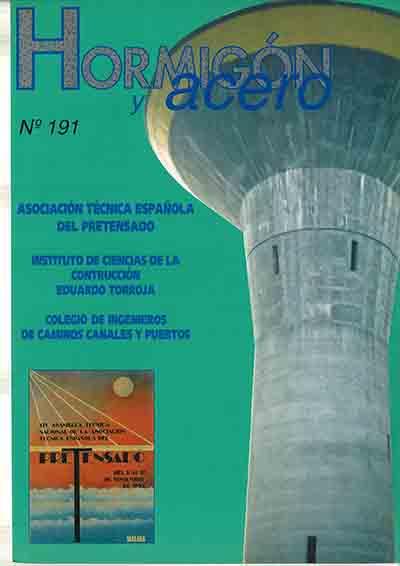Análisis de estructuras con cables y telas
Resumen
Se presenta un método iterativo para el análisis de estructuras formadas por telas, cables y barras. La estructura se supone formada por barras rectas, trabajando sólo a compresión y/o tracción y con un comportamiento elástico no lineal, y que sufre grandes desplazamientos, por lo que el equilibrio debe establecerse en la posición deformada en lugar de en la inicial. Pueden también considerarse secuencias de barras consecutivas sometidas a la misma tensión, que deslizan en los nudos intermedios, que denominaremos cables poligonales. Permite considerar actuando simultáneamente sobre la estructura cargas puntuales en los nudos, tensiones iniciales en las barras y en los cables poligonales y desplazamientos impuestos a los apoyos rígidos. El método consiste en encontrar el conjunto de desplazamientos de los nudos que producen, en la s barras y apoyos, esfuerzos y reacciones que equilibran las fuerzas exteriores, respetando las condiciones de contorno. Se parte de una solución inicial, que puede ser dada por el proyectista, que es sucesivamente corregida en base a los desplazamientos de una estructura auxiliar, linealmente elástica, cuyos nudos ocupan la posición correspondiente a la última corrección, cuyas barras tienen las características elásticas tangentes, y que está sometida a los desequilibrios nodales como cargas externas. Dada la gran flexibilidad de este tipo de estructuras, se propone una solución muy simple para calcular los desplazamientos, que es posteriormente corregida mediante un criterio de minimización de la energía total de la estructura. Se incluye una descripción completa del método, junto con un conjunto de ejemplos ilustrativos.

